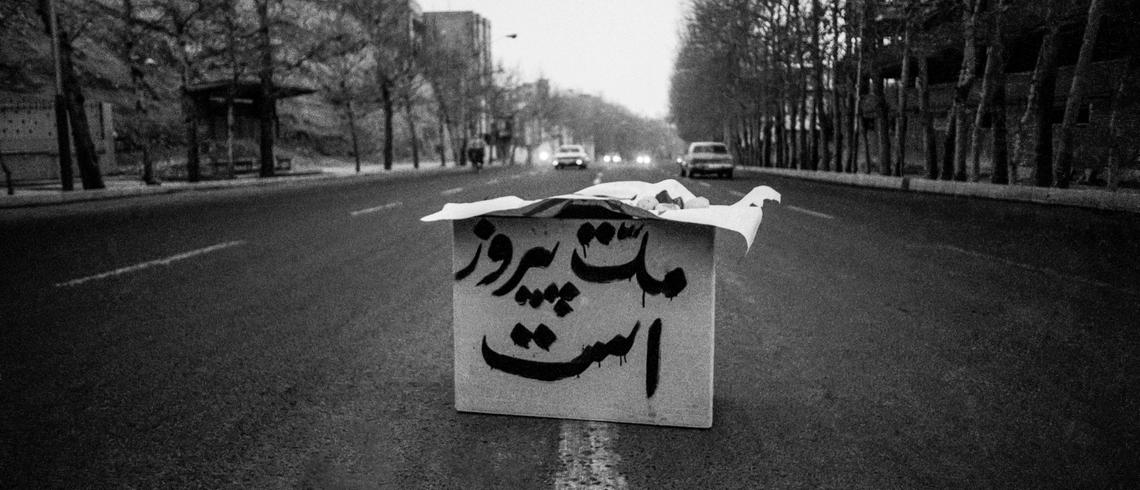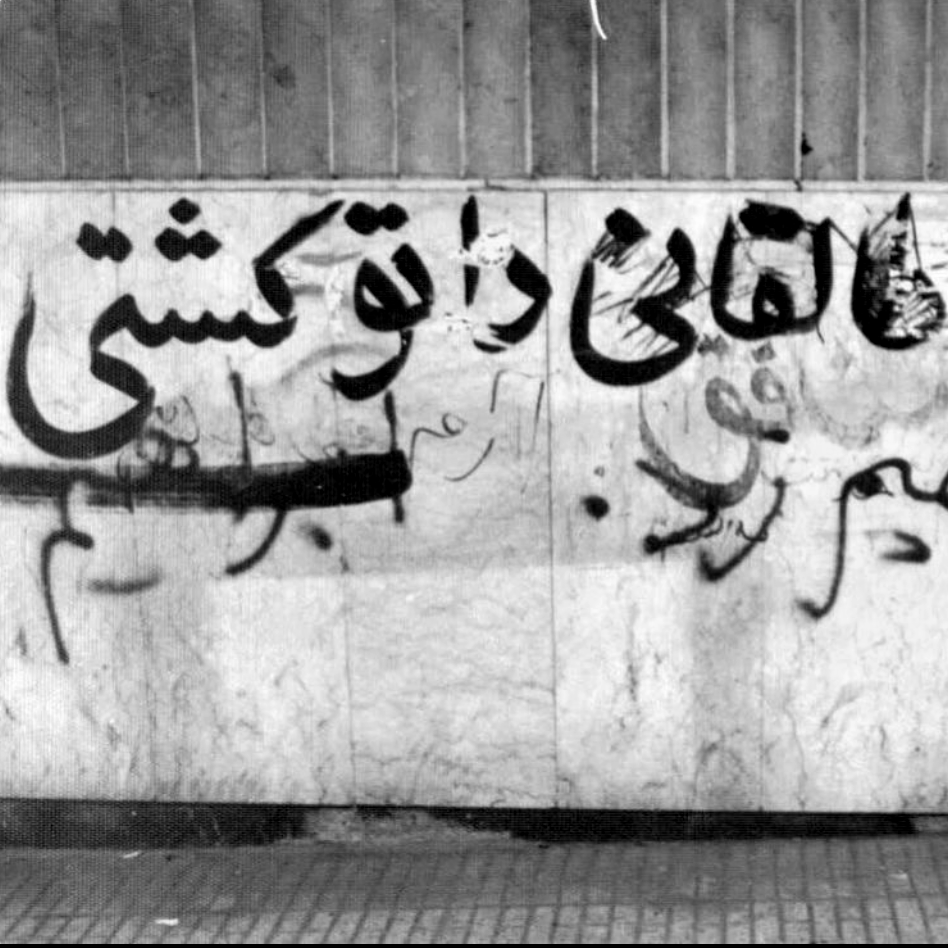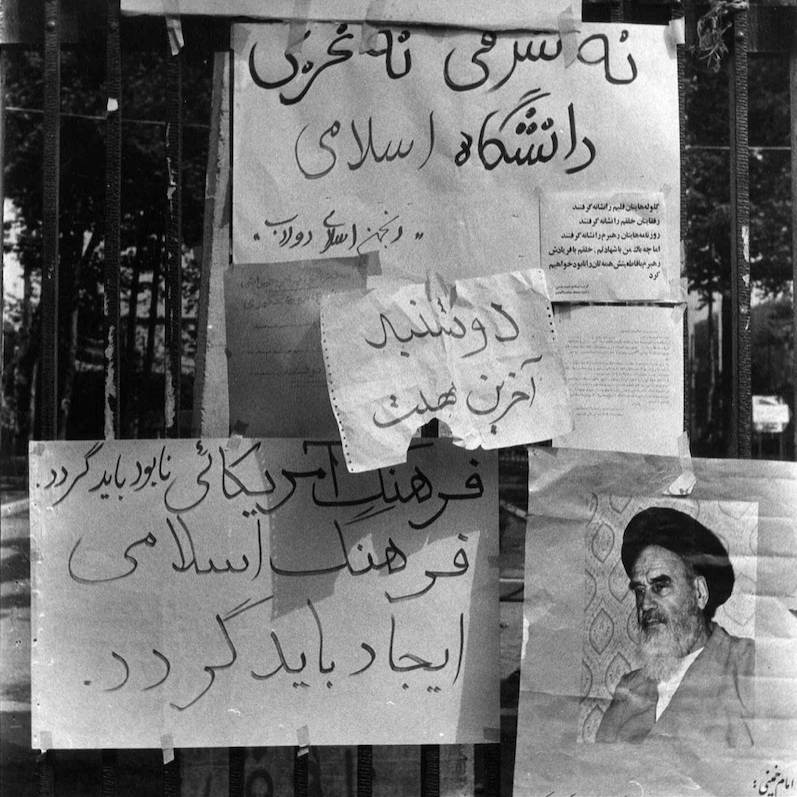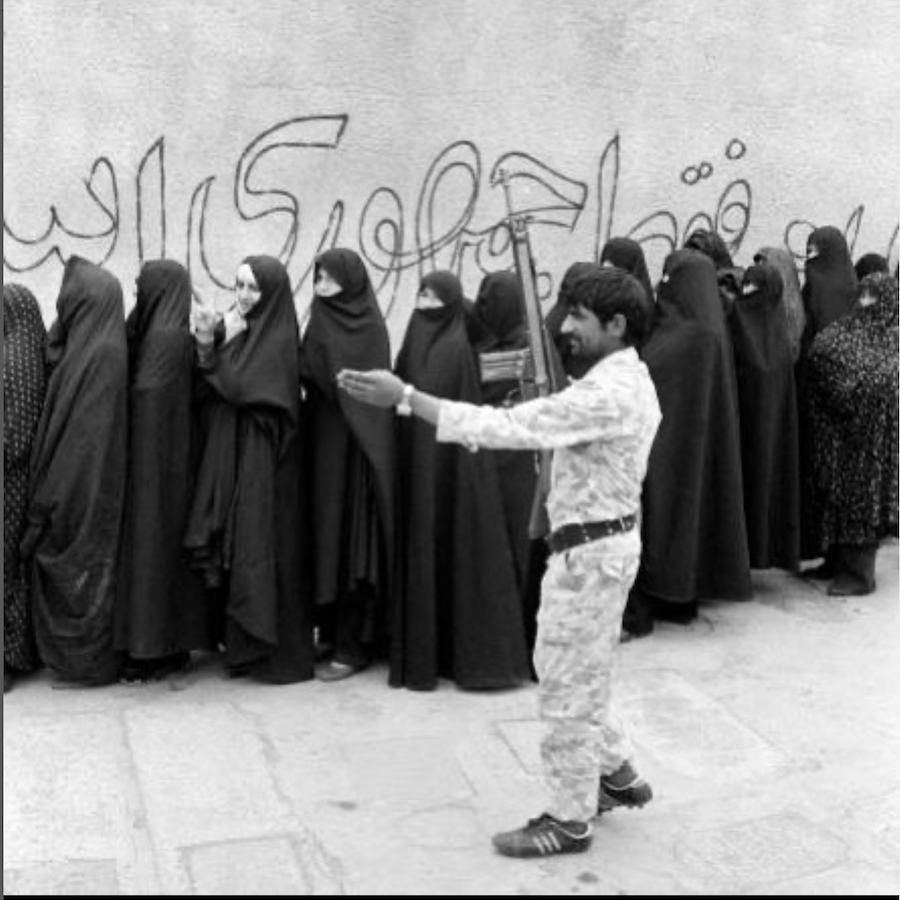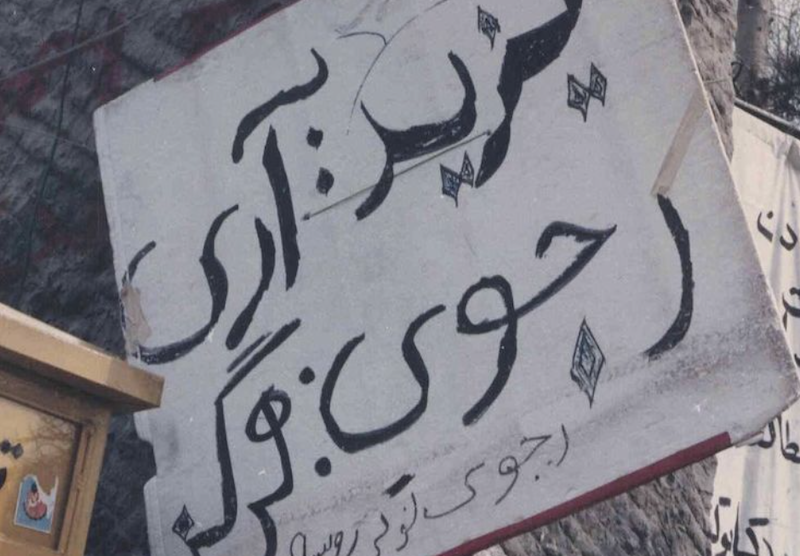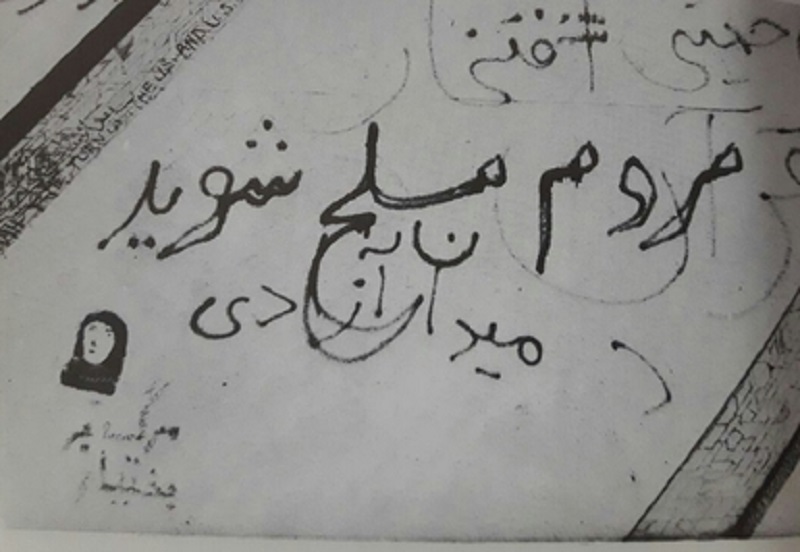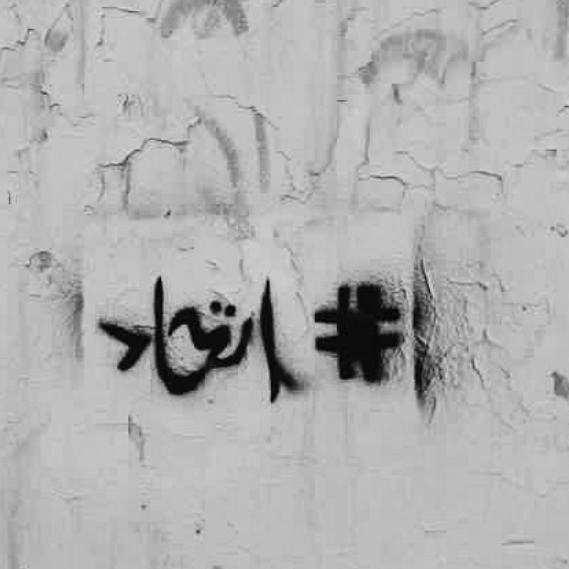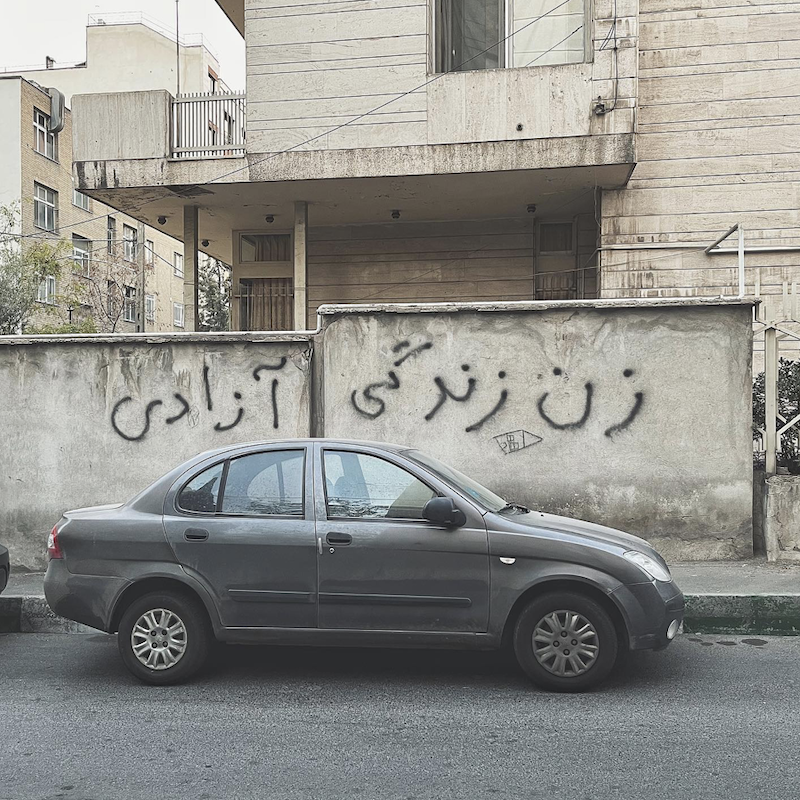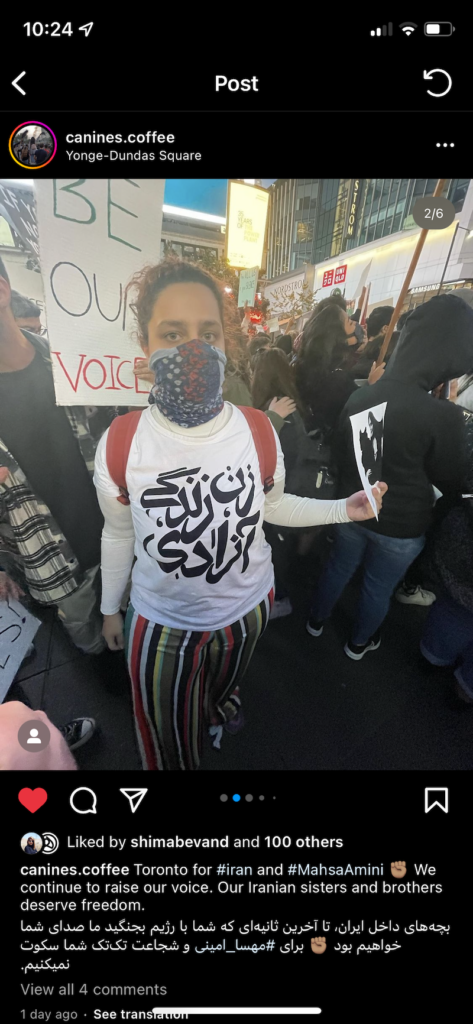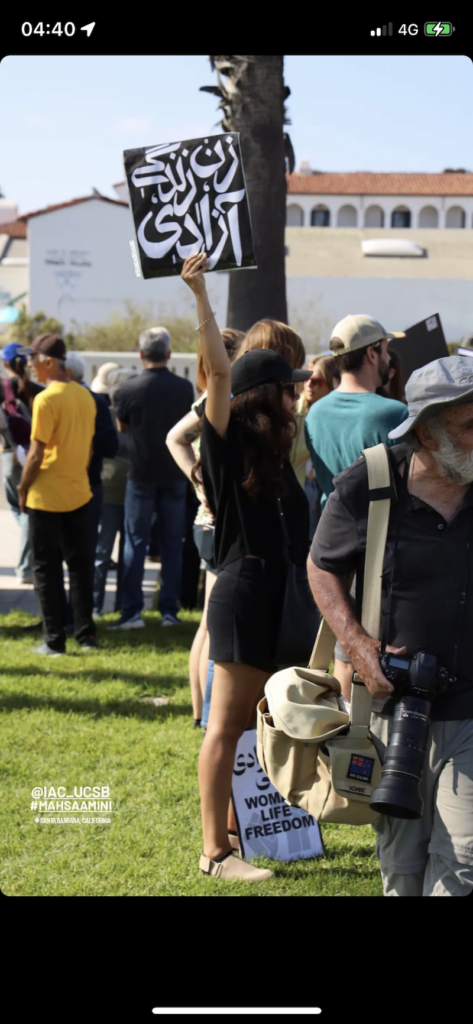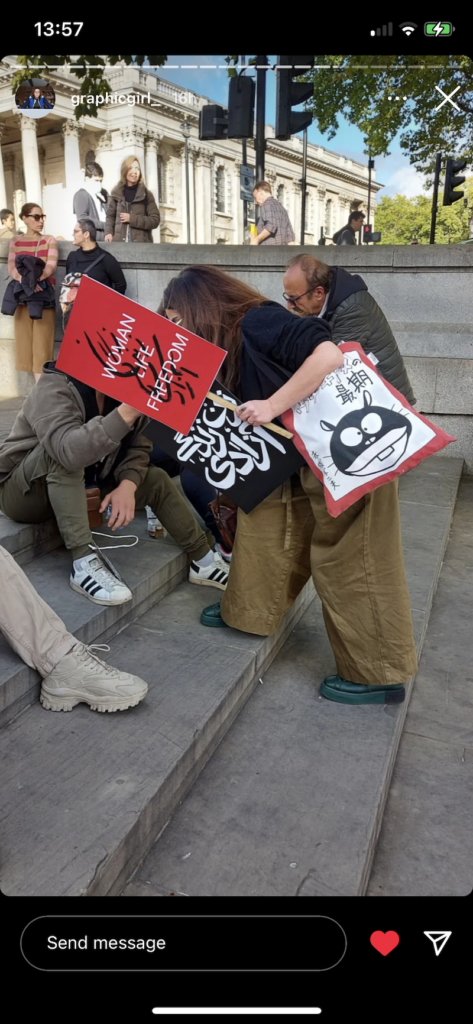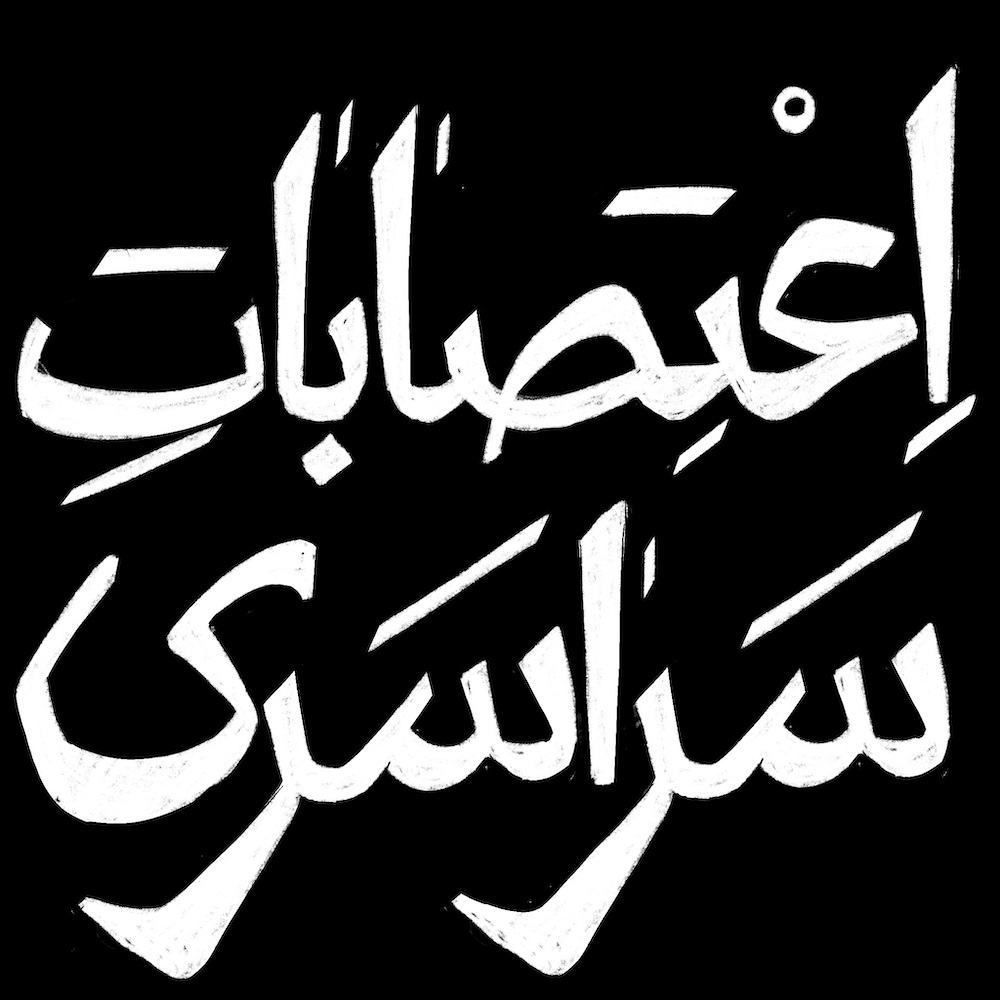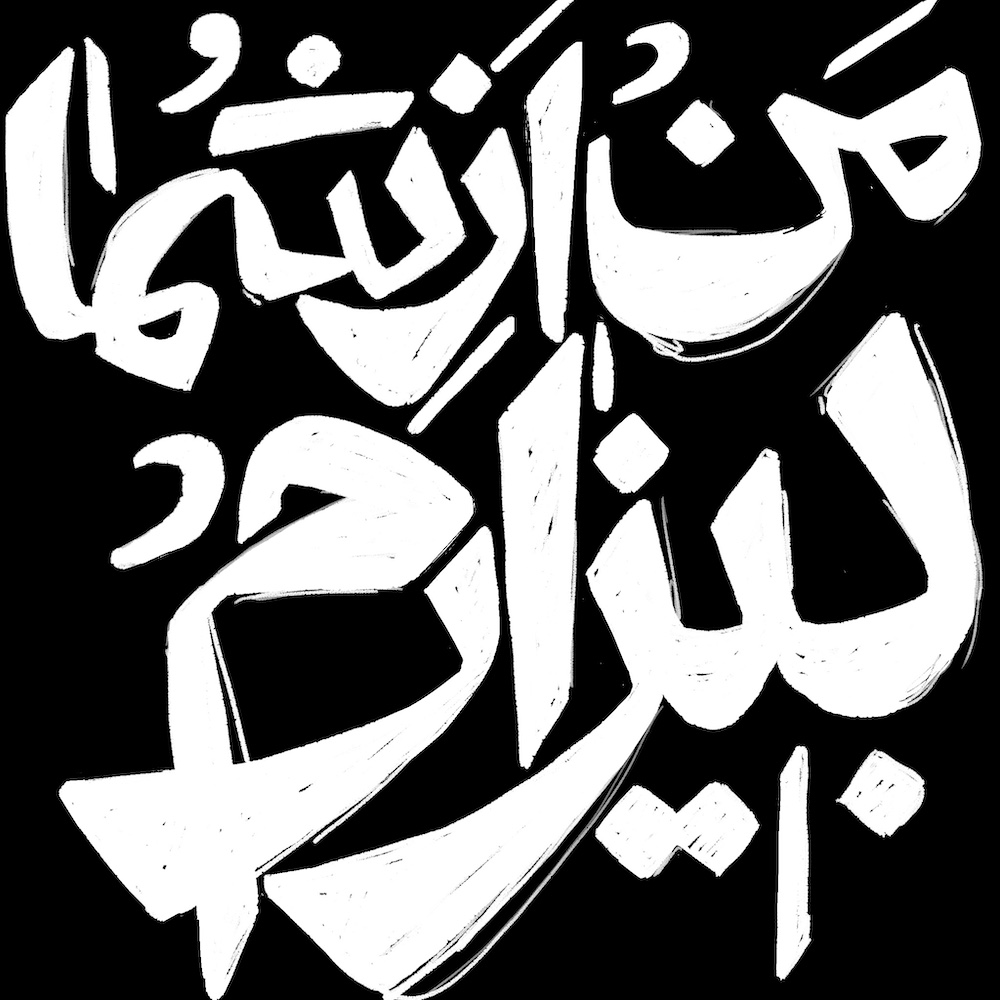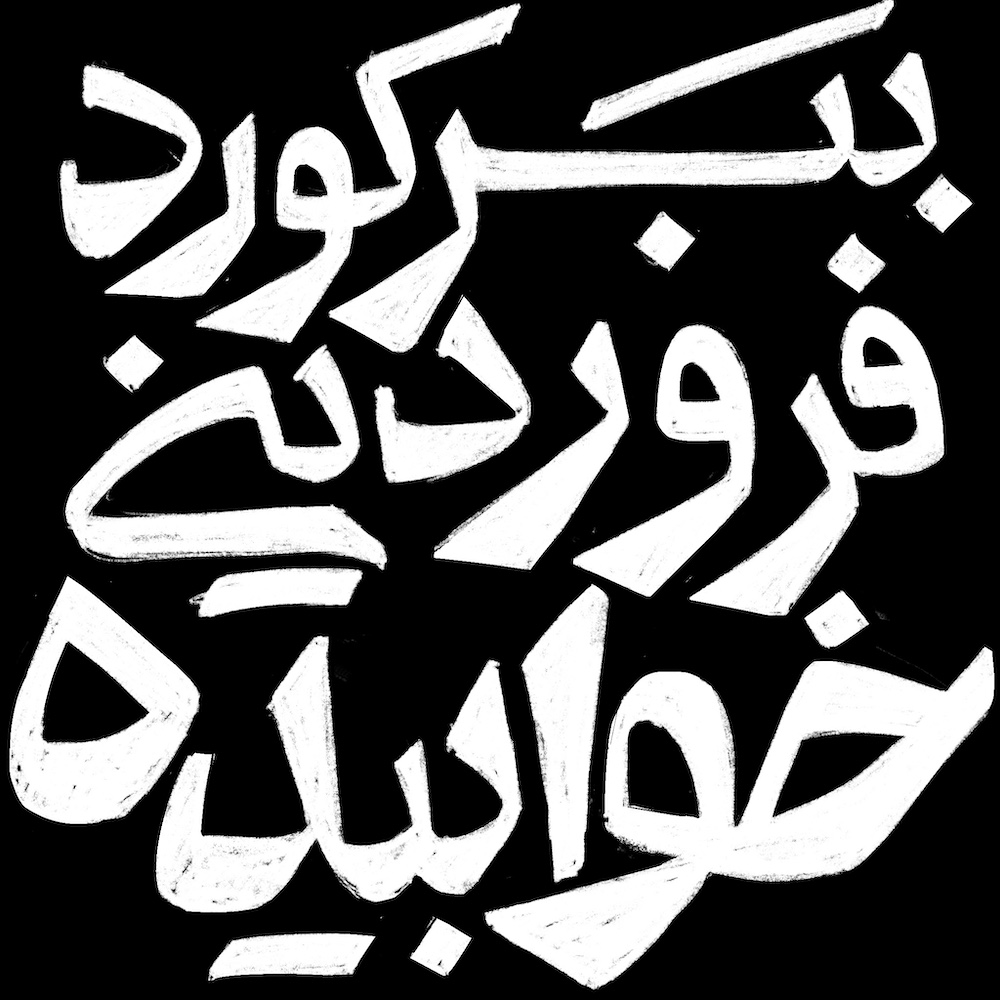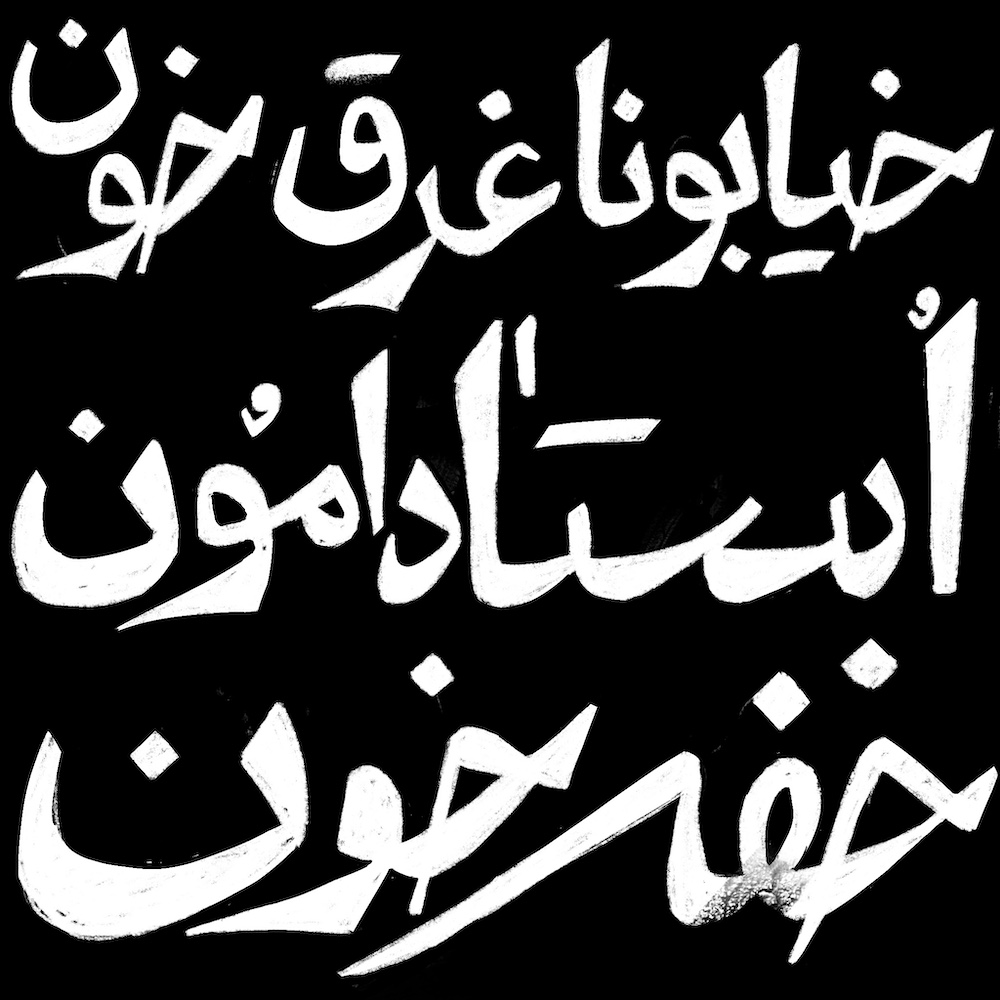Protest art refers to the artistic works created by activists and social movements. It is a traditional means of communication used by a cross-section of collectives and the state to inform and persuade citizens. The slogans of the revolution, movement, or demonstration are written on walls and buildings while the writer is in distress. This usually occurs at night in the cover of darkness. The scribe is not worried about letterform correction or aesthetics, they aim only to express themselves by writing their thoughts on the surface and informing the public. But their action surpasses this; they are creating art. They represent a specific cause or message from furious people that need to be heard. Protest art is an essential technique for increasing social awareness and developing networks. It has long been a powerful platform for conveying ideas to the masses, as it can promote conversation and highlight social, political, and environmental issues.
- Written slogans against Ayatollah Beheshti in Tehran, 1980 photo from the Iranian Association of Documents.
- Whispers of Cultural Revolution and University Closure, April 1980, Tehran.
- Voters queue for yes or no referendum to the Islamic Republic, April 1979.
With the beginning of the Iranian Islamic Revolution in 1978, due to the lack of popular media to convey messages and ideas, protestors confronted the Pahlavi regime with lettering and painting to communicate their anger. During the revolution, all classes of people tried to bring the process to fruition as soon as possible by taking on various cultural, political, and campaigning activities against the regime. The protestors wrote slogans on the wall such as “Damn on the king” and “Freedom of the Islamic Republic”. Today in some cities, these wall writings still remain as historical relics of the revolution.
- Placards against the candidacy of Massoud Rajavi from the Tehran electoral district during the period of election propaganda of the first parliament of the Islamic Council in 1980. Photo from National Archive of Iran.
- “People, get armed.” Writing on the wall in 1979. Without wall writing, information would have passed much more slowly from person to person.
Writing on walls in public spaces was the most popular medium during the years of the Islamic Revolution and one of the practical tools that significantly contributed to the destruction of the ruling power. A wide range of sources influences contemporary typographers and lettering artists. In my practice, I often find influence within the bold creativity and freedom of protest art, the forms perfectly encapsulating the message of opposition I hope to convey in my work.
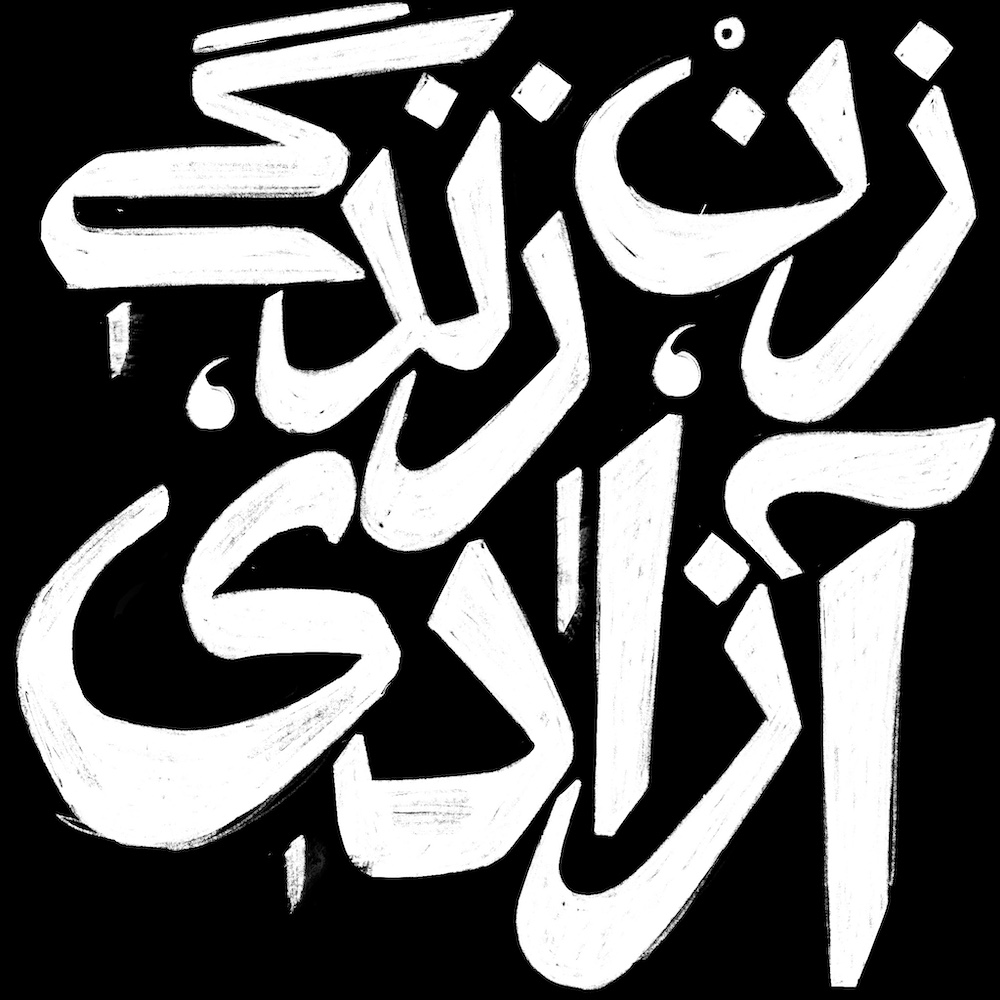
Woman, life, freedom in Persian, written by the author with an Apple pen in Procreate, 2022.
The rise of social media has forced a change in protest movements across the globe. Twitter, Instagram, TikTok, and other social media platforms allow protestors a fast, viral way to spread their message. Digital posts have taken the place of walls; instead of spray paint, they use a stylus.
Notably, we continue to hear the same immediacy in the message. The death of Mahsa Amini, a 22-year-old girl in Iran recently sparked outrage, and the citizens have begun to speak out against the morality police. Iranians have broken the world record for tweeting the hashtag #MahsaAmini over one hundred million times during the midst of internet blackouts and mass censorship of social media.
- “Hashtag unification”, during the protest of the death of Mahsa Amini. 2022, Karaj, Iran.
- “woman, life, freedom” on the wall. Tehran, Iran. 2022.
Protest art has always had an impact on me, and I began to express my rage over the death of Mahsa using my medium of type. I propagated “woman, life, freedom” through my feed, a phrase the movement was popularising to spread the message. The outcome was unexpected: people worldwide adopted my design, going as far as to print it on T-shirts without knowing the author. Online media now has the power to spread the message of movements far more rapidly than the traditional way of writing on the walls and can have a greater impact on affecting change in political situations.
- The artwork found on Twitter, printed on a T-shirt in Toronto. 2022. Photo taken by Boshra.
- Protest in Santa Barbara, California. 2022 Photo taken by Nahal Sohbati
- Protest in London, England. 2022 Photo taken by Elena Veguillas
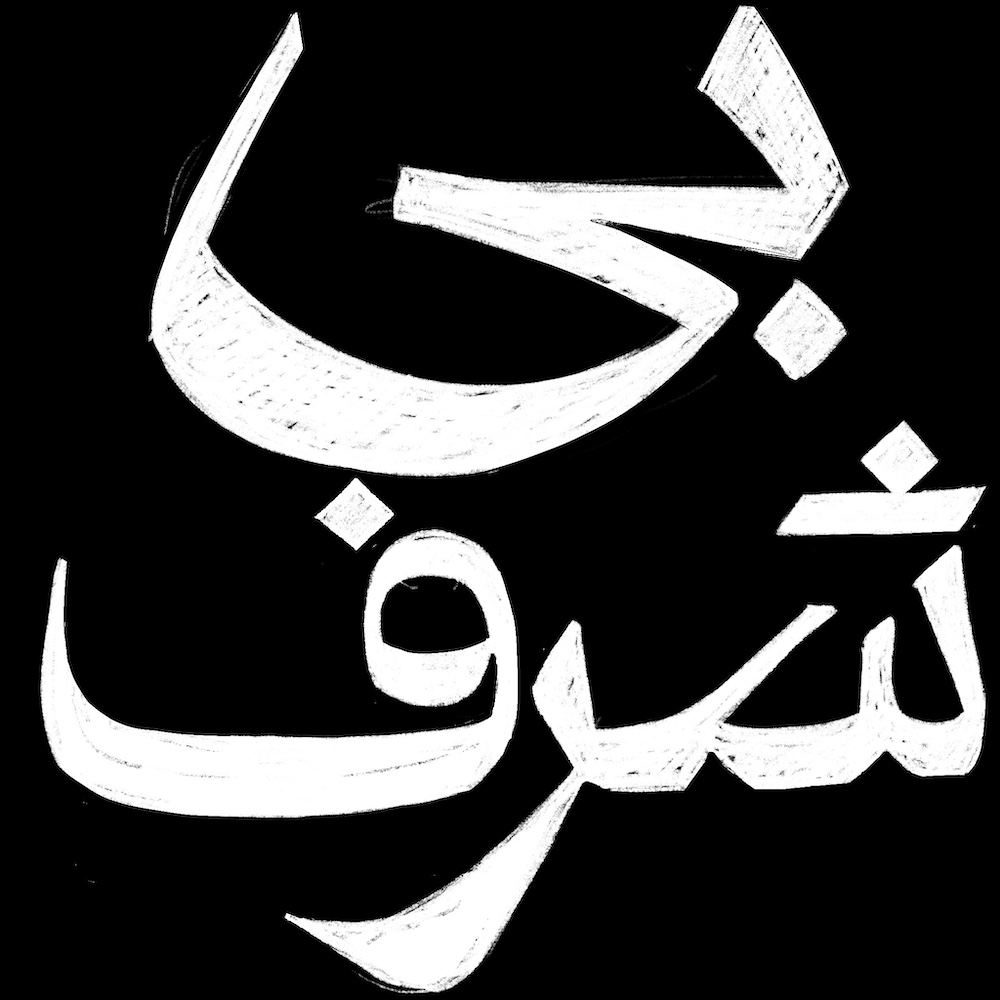
People shout the word Bi Sharaf, which means ungentle or dishonest, to celebrities and influencers that have decided to be silent instead of defending the people.
- “The nationwide strikes” hashtag circulated millions of times on Twitter and social networks and many people decided to strike.
- With the video going viral, the sentence من از شما بیزارم which means I hate you (you=government) circulated widely.
My “writing on the wall” of my Instagram page is a form of modern protest. Persian is rich in literature, and poetry plays a vital role in people’s everyday life. I was lucky that one of my artworks, specifically visualising poetry, was selected to be published in the book Women of Type (New York, 2022). Using my experience as a lettering artist and protest scribe has allowed me to strengthen the movements I believe in across the globe.
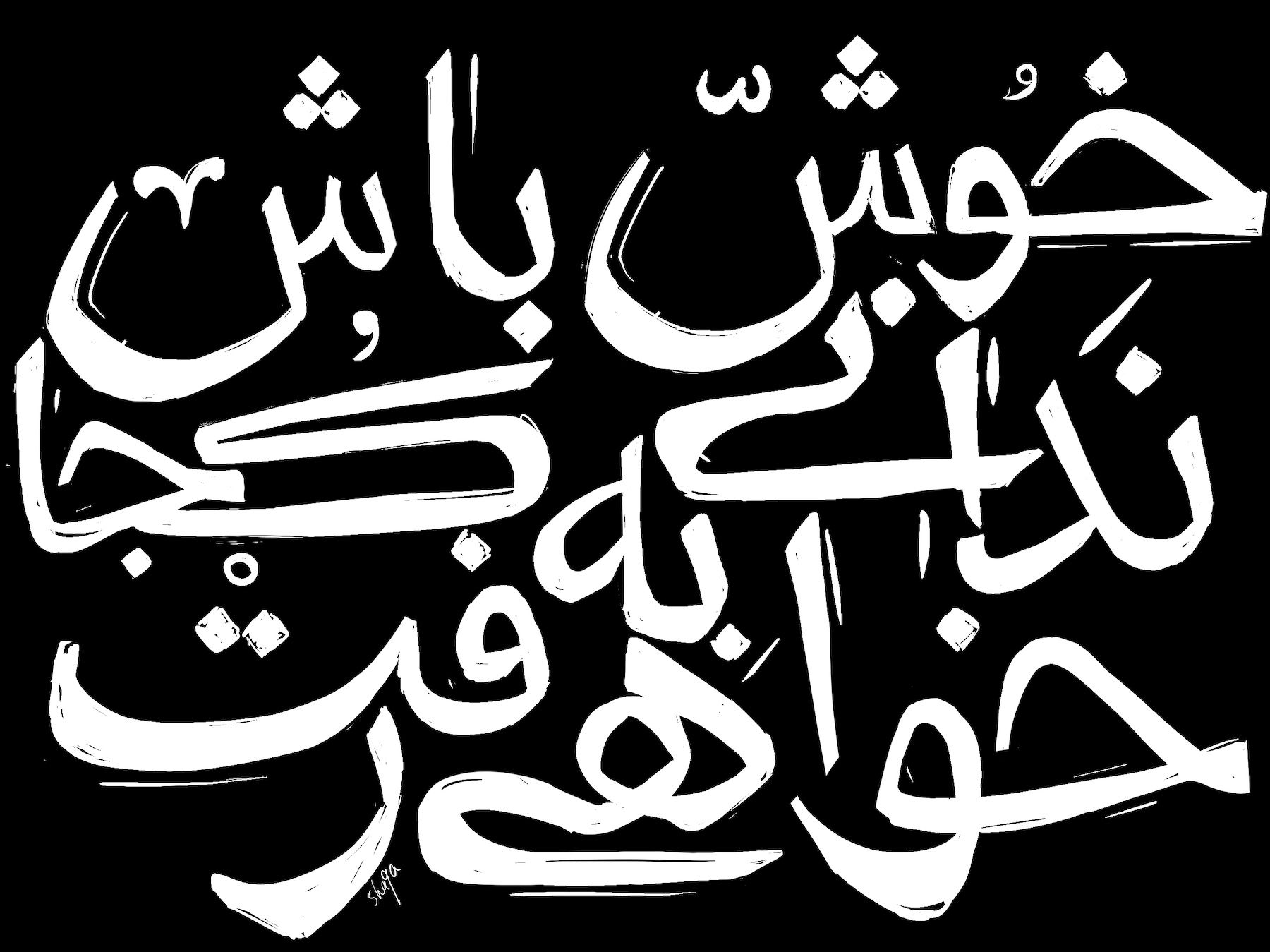
“Be happy, you don’t know where you will go.” Published in the book Women of Type (New York, 2022).
- Pointing directly to actors in Iran and protesting why they are silent.
- Pointing directly to all teachers, why they are silent while people are killed in the street.
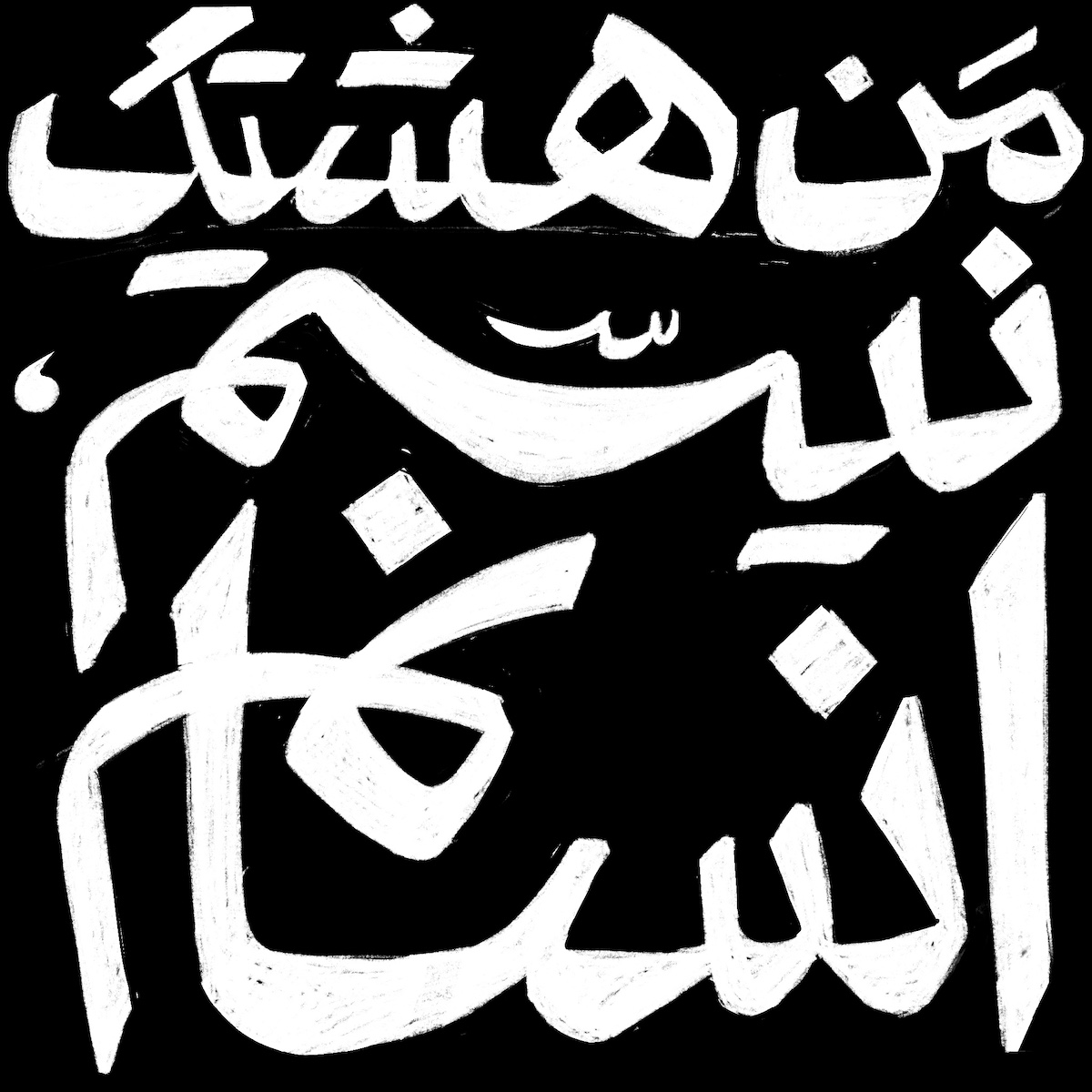
“I am not a hashtag; I am human.” Although using hashtags can spread the news worldwide, the problem is that we are talking about human life and human rights.
Barpakhiz is one of the well-known revolutionary anthems of the Iranian revolution period, which was performed by the Confederation of Iranian Students Abroad before the revolution, and was performed again in 1980 and gained great popularity. This song is adapted from the famous Chilean song, and Ali Nadimi writes its lyrics. The anthem of the united people (El pueblo unido jamás será vencido, the united people will never fail) was composed in 1973 by Chilean composer Sergio Ortega. This anthem, which quickly became famous among the people of Chile, was banned shortly after the coup of Augusto Pinochet in Chile.
